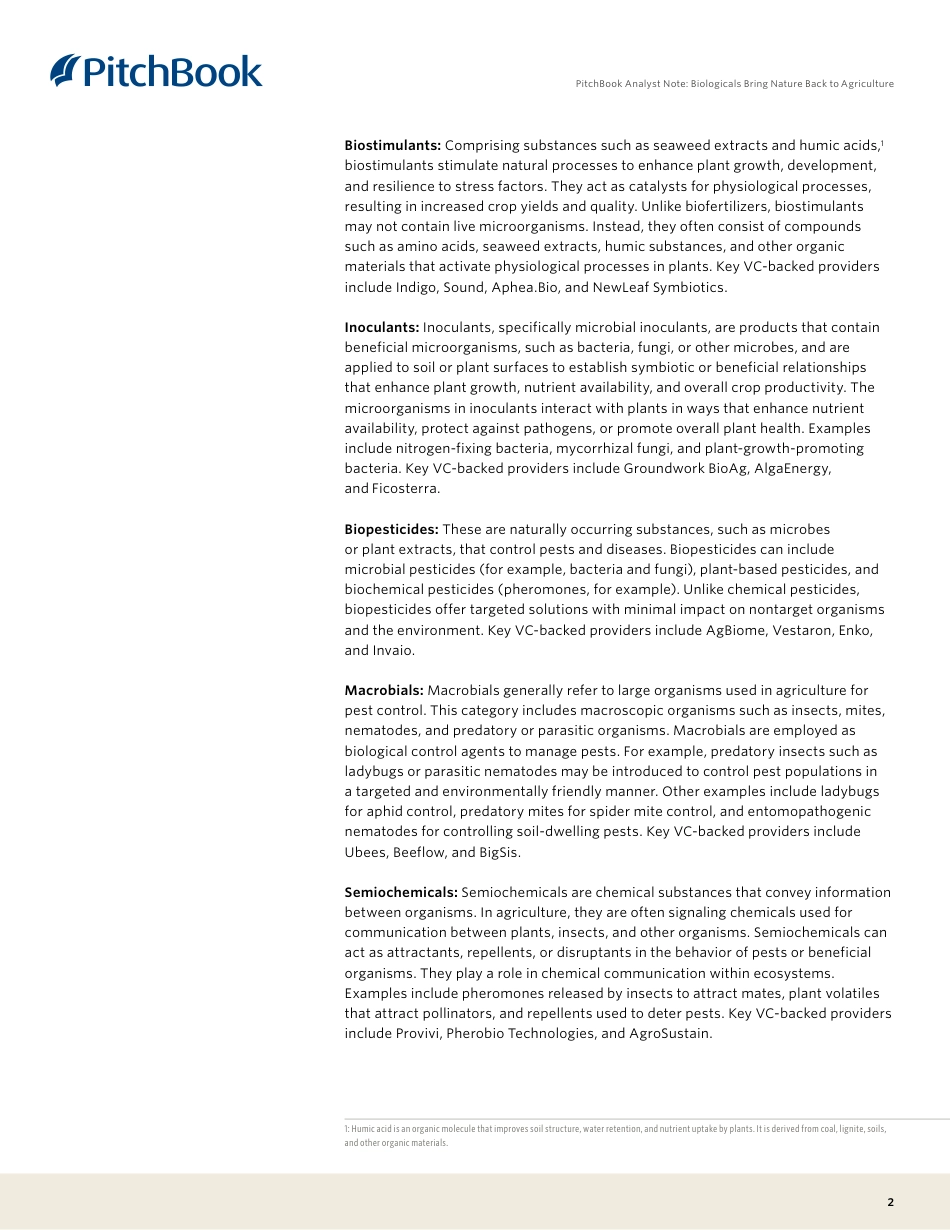1PitchBook Data, Inc.John Gabbert Founder, CEONizar Tarhuni Vice President, Institutional Research and EditorialPaul Condra Head of Emerging Technology ResearchInstitutional Research GroupAnalysisPublishingDesigned by Joey SchafferContentsDataTJ Mei Data Analystpbinstitutionalresearch@pitchbook.comPublished on January 19, 2024Overview1Key categories of agricultural biologicals1Benefits and challenges3Market4Macro drivers5VC activity7Exits8EMERGING TECH RESEARCHBiologicals Bring Nature Back to AgricultureSustainable alternatives to synthetic agricultural inputsPitchBook is a Morningstar company providing the most comprehensive, most accurate, and hard-to-find data for professionals doing business in the private markets.Alex Frederick Senior Analyst, Emerging Technologyalex.frederick@pitchbook.comOverview The agricultural industry is undergoing a transformative shift toward sustainable and environmentally friendly farming practices. One of the key facilitators of this change is the adoption of agricultural biologicals—a category of products derived from natural sources that enhance crop productivity, optimize soil health, and reduce the reliance on traditional chemical inputs. Despite an overall tepid macroeconomic environment and a pullback in VC activity, demand for biologicals has remained robust. We estimate this industry will generate close to $15 billion in revenue in 2023, with a total VC investment of nearly $1 billion.Agricultural biologicals encompass a diverse range of products, including biopesticides, biofertilizers, and biostimulants, among others. Unlike conventional chemical agricultural inputs, biologicals leverage the power of living organisms such as bacteria, fungi, and plant extracts to promote plant growth and protect crops from pests ...



